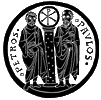"Walking dunes," which are found between the Yuma Desert and the adjoining Gran Disierto of Mexico, are thought to be the cause of the "now-you-see-it-now-you-don't" mission. The knolls and gullies of the dunes constantly change shape in the eddying winds that play over the sand. Each shape contains some solid object, such as a rock or a desert plant, over which a mound gradually forms. Hills which can reach a height of 300 feet can easily contain an object as large as a mission building. Occasionally such covered objects are blown clear for a time before being buried again by the fickle breezes.
In 1970 a student aviator from Los Angeles strayed off course and noticed a belfry sticking up out of the dunes as he flew between Yuma and Tucson. He mentioned the sighting when he arrived in Tucson, but, since no one knew anything about the lost mission at that time, his story was "taken with a grain of sand."
Yuma has the dubious distinction of frequently being the hottest place in the whole U.S.-of-A. Although no permanent settlement existed there until the mid-1800s, Yuma is now a bustling (?) city of over 55,000 sweaty people. Hernando de Alarcón of the expedition led by Francisco Coronado passed through in 1540. Jesuit missionary Fr. Eusebio Kino (who, by the way, was a German) came into the area in 1699 and recognized what is now called the Yuma Crossing of the Colorado River as a gateway to California. Nothing came of his discovery at the time. Kit Carson rediscovered the crossing some 50 years later. For its role in the passage of travelers through the years, the Yuma Crossing has been designated as an historic landmark.
Fr. Francisco Garcés established missions at the crossing around 1780. The Yuma Indians later killed Garcés and the colonists and destroyed the missions.
Sources: Jim Brandon, Weird America (New York: E. P. Dutton, 1978), p. 14; and The Internet.